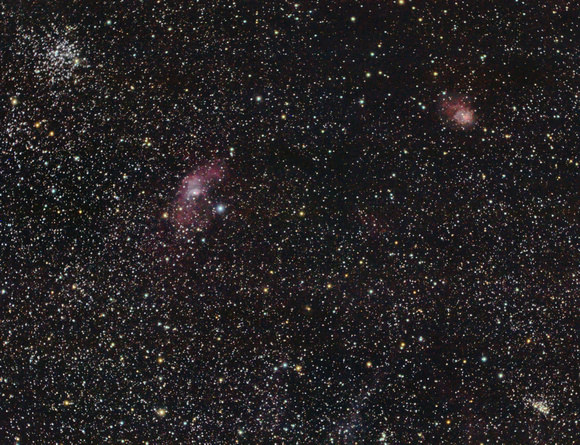Canon 30D Unmodified50x180sec at iso 1600
30 Darks/Flats/Bias
Orion ED80 with WO 0.8 reducer/flattenerA busy field also containing nebula NGC 7538, open clusters M52 (upper left), NGC 7510 (triangular cluster lower right) 1450 (mid right bottom).
The Bubble Nebula is actually the smallest of three bubbles surrounding massive star BD+602522, and part of gigantic bubble network S162 created with the help of other massive stars. As fast moving gas expands off BD+602522, it pushes surrounding sparse gas into a shell. The energetic starlight then ionizes the shell, causing it to glow.At the heart of the Bubble Nebula is a star that is forty times more massive than our Sun. Located in the northern constellation of Cassiopeia, this spherical nebula requires a large telescope, dark skies and contrast enhancing filters before it can be seen visually due to its low surface brightness.
The bubble itself is actually quite large, spanning six light years across and is expanding at an incredible four million miles per hour. The bubble was formed by the bright star that is positioned above and to left of its center. The radiation released from inside that star is so intense that it literally blows its outer surface off into space. The bubble marks the leading edge of the gust from these powerful stellar winds as it plows into denser surrounding material. This object is approximately 7100 light years from Earth.
(From Universe Today)


